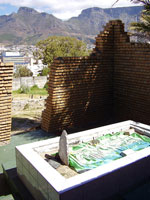This Day in History: January 17, 1886
Additional Date: January 17, 1886
The first arrival of Muslims in South Africa took place in the 17th century, when Malay slaves were brought to the Cape. This was followed by the arrival of free Muslims and political exiles from Sumatra. By the mid 18th century, Islam had spread significantly amongst the Cape slave population. By 1804, Muslims had been granted religious freedom and in 1805, they had been allocated a piece of land - the Tana Baru Cemetery - for burial purposes.
In 1886, the cemetery was closed under the Public Health Act of 1883. This left the Muslim community with no alternate burial ground. On 17 January 1886, in defiance of the closure, 3000 Muslims buried a child at Tana Baru. This was followed by a march. General unrest continued in the Cape for another three days.
The Tana Baru cemetery uprising was one of the most significant political events in the 19th Century history of Cape Muslims. In commemoration of the 124th anniversary, a remembrance march will be held on this day in 2010 from the Boorhanool Centre to the Tana Baru Cemetery.
Related:
SAHO Feature: History of Muslims in South Africa
SAHO Archive: 1804-1899
